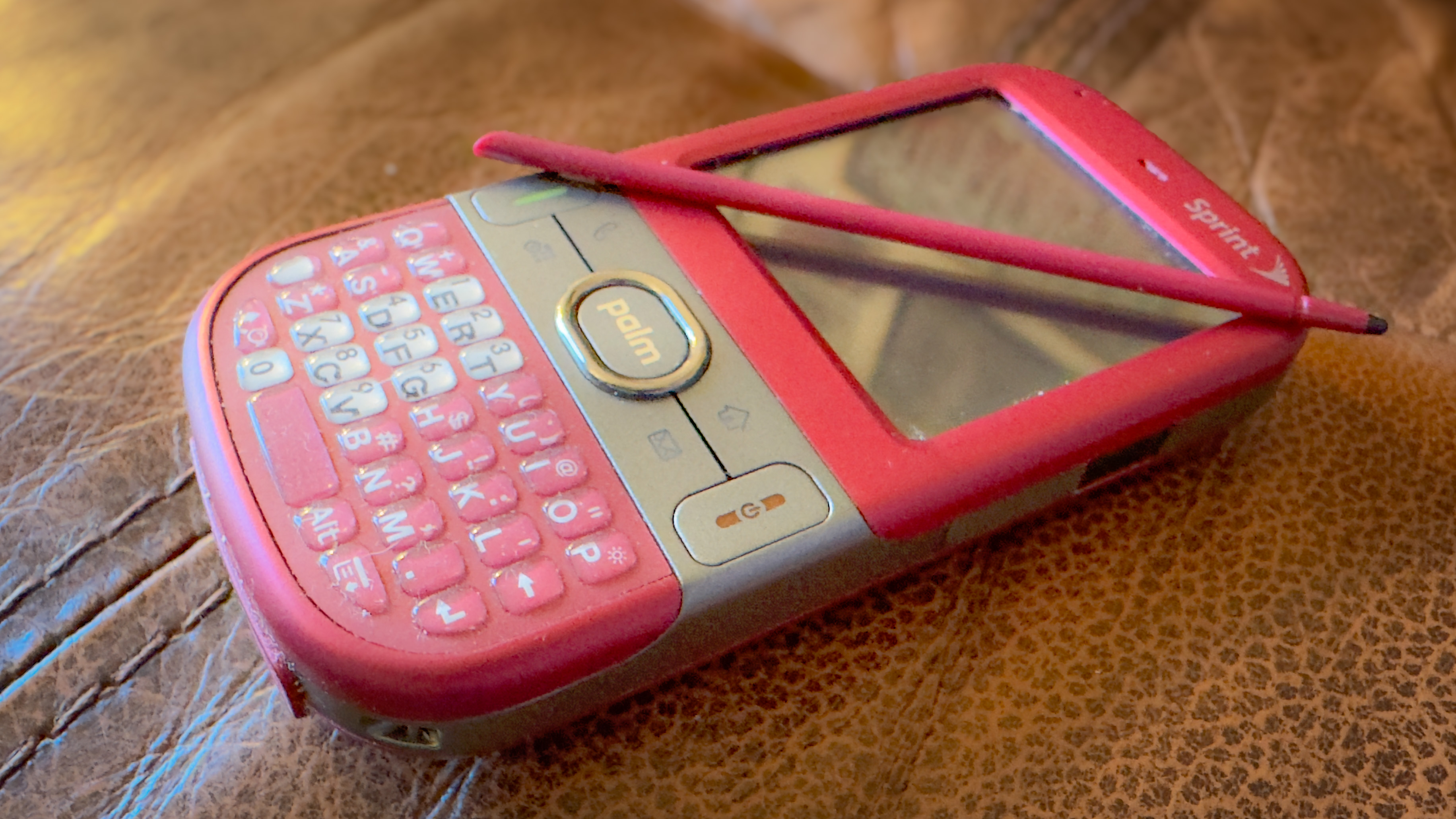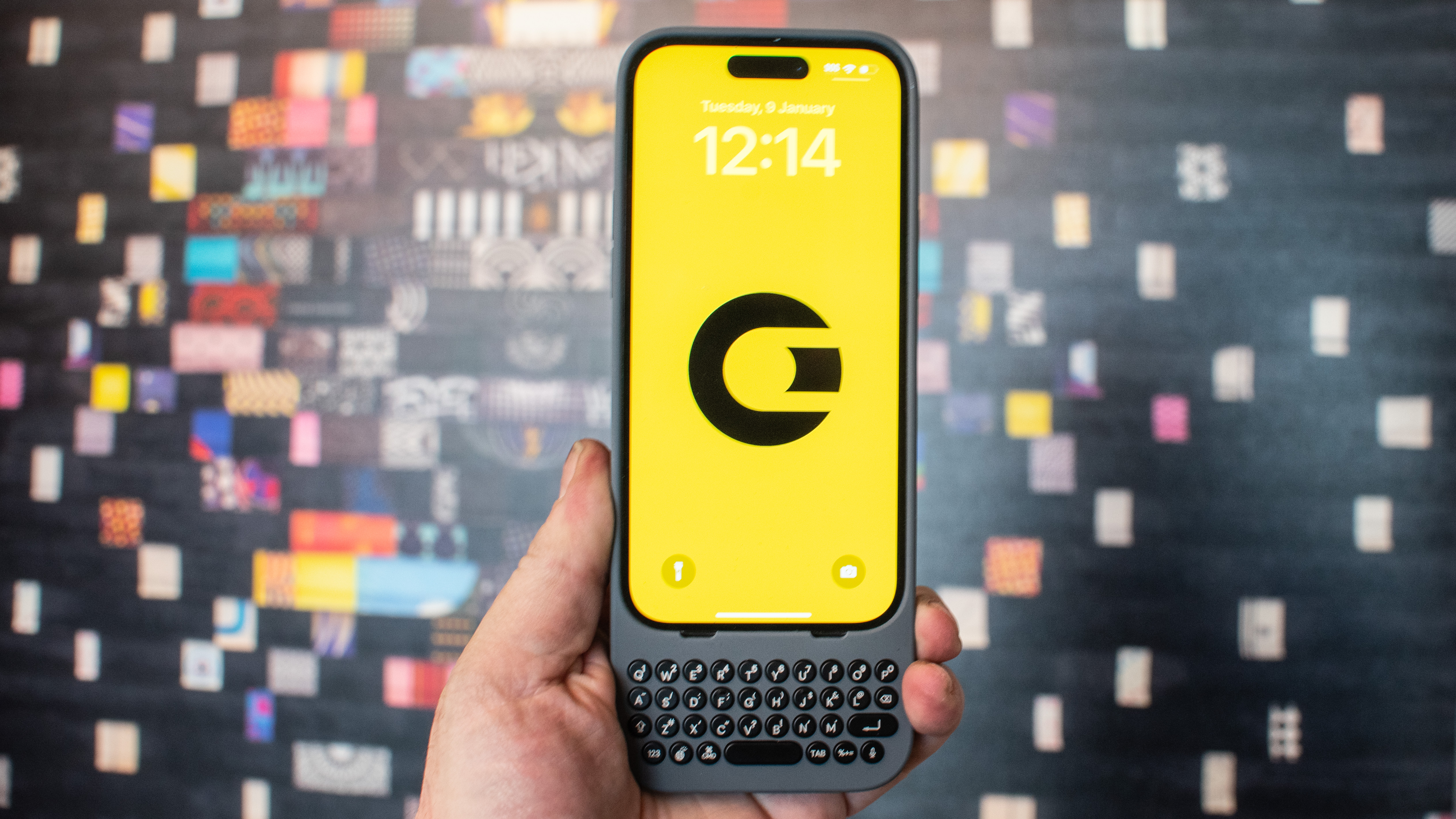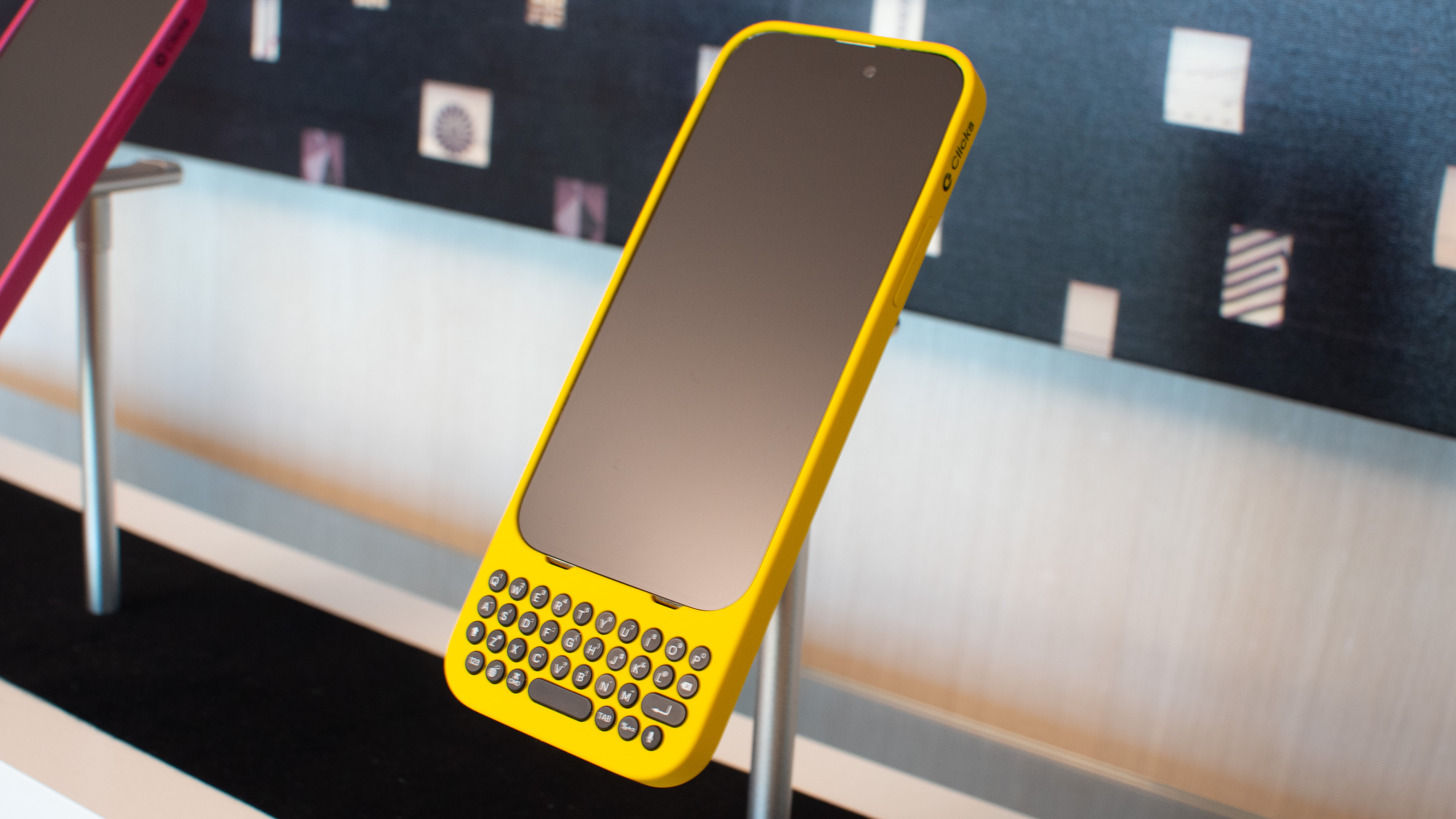A completely biased look at Clicks, the successful new iPhone keyboard
Not just reliving my Palm Treo glory days

I’m rooting for Clicks, the new keyboard accessory for the iPhone 14 Pro and coming eventually to my iPhone 15 Pro Max, and the only explanation is personal bias. My kid calls Clicks a Grandpa Phone accessory. My Editor quotes Steve Jobs complaining about too many buttons on a phone. I don’t care. Clicks makes sense. It brings back great features that we somehow lost, and besides, it’s already a success.
That’s right, Clicks is a successful product. I sat down with Michael Fisher, one of the co-founders of Clicks, and he told me that the founder’s edition of Clicks has already sold out.
“If one in a thousand [iPhone buyers] buys this, it’s still a great business and we’re actually seeing demand that tracks above that, so that’s good,” says Fisher.
That’s a 0.1% attachment rate. To compare, 70-80% of iPhone buyers own ANY case, and around 30-40% buy AirPods when they buy a new iPhone.
Okay, 0.1% is small, but it’s measurable. If you were traveling 0.1% of the speed of light, you’d be moving 700,000 miles per hour. So 0.1% can be a lot of something very large. There are a lot of iPhones, millions sold every year. Convincing one in a thousand owners to buy a keyboard accessory? That’s a success.

“This is a successful product. We’re thinking about the next one. We’re thinking about iPhone 16, iPhone 17. Right now we’re focused on owning keyboards on the iPhone, but in the future, we may want to diversify a little bit.”
A friend and a fan of the co-founders
Admittedly, I’m biased. I’ve known two of the Clicks co-founders for years. I started reviewing phones full time in 2006, the same year that Crackberry Kevin Michaluk founded Crackberry.com. My first phone event was the Blackberry Pearl launch in New York City, and I reviewed every subsequent Blackberry phone until I started running the reviews program at Samsung in 2011.
Sign up for breaking news, reviews, opinion, top tech deals, and more.
That’s when I met Michael Fisher at PocketNow. I was handing out the free phones for Samsung, and Michael Fisher was about to become Mr. Mobile, posting videos on behalf of Android Central and Future, the home of TechRadar.

Fisher does a popular segment called “When Phones Were Fun” and I dug out an old phone, my Palm Centro that predates the Palm Pre. The Centro has a keyboard, of course, and a stylus. It also has a headphone port, a mute switch, and next to the removable battery, there’s a microSD card slot. There’s an IR blaster on the side for wireless accessories, and it even has a lanyard loop at the bottom so you can attach a wrist strap. Best of all, it’s tiny. It’s shorter and lighter than the smaller iPhone 15, though it’s fat and pill-shaped. It’s also pink. There’s nothing like it today, not even close.
Here are two people I know and I’m not just friendly with them, I’m a fan. I was a follower of Crackberry.com, and so was Blackberry, the company. Blackberry invited Kevin on stage to be part of a major phone launch. I’m a fan of Michael Fisher and, frankly, so is everybody. Just watch his videos, the fella knows what he’s doing.
These are longtime phone folks, like me. I’ve forgotten more phones than most people have seen, except for people like these Clicks co-founders. Before the iPhone dominated, dozens of different phones launched every year. If you count every flip, feature phone, quick-messaging slider, and smartphone running Windows Mobile, then Samsung alone launched around 70 phones in 2007, the year the iPhone first hit the market.
We point to the singular design of the iPhone, now copied by every other smartphone maker with only minor variations on the color, materials, and finish, and pretend this is an evolution of design. What if it’s not? What if we forgot some of the good stuff? What if the old days actually had it better?
So many great phone features have been forgotten

Before the iPhone, no matter what phone you had, it had a keyboard. If you had a simple candy bar phone, you could text message under your school desk by typing on the number keypad. If you had a smartphone, you had a real QWERTY attached, and not just letters. You had a shift key and a Control key. You had shortcuts.
Why has all of this disappeared? Did Steve Jobs part the Red Sea in 2007 and hardware innovation simply dried up to clear a path? I agree that some buttons were unnecessary, like the Send and End keys to hang up phone calls. But clearly, even Jobs had lingering doubts, as the iPhone kept the mute switch until the iPhone 15 Pro replaced it with an Action Button. The iPhone Home Button lasted more than 12 years.

“Think about the iPad having a magic keyboard. Nobody thinks it’s weird to occasionally use a keyboard when you want it and then take it off when you don’t. That shouldn’t be weird on a phone either, you should have the option,” says Michael Fisher.
Enter Clicks, with a full QWERTY keyboard for the iPhone. Actually, it’s not quite full enough, and that’s why it doesn’t have Made for iPhone (MFi) certification from Apple. Because it technically omits SOME keys from a full-QWERTY layout (there’s no Esc. key, for instance), it isn’t a fully compatible accessory, and that’s a requirement to clear Apple’s MFi certification. Weird, but true.
It's not a Blackberry, it's just made by Blackberry folks

I don’t want to say that Clicks makes your iPhone into a Blackberry, because who was really looking for that? Only true Blackberry fans and that’s a sad person because Blackberry phones were always necessarily corporate, work-focused, and not very fun. Still, the comparison is apt in the best ways. The Clicks team is made up of a formidable number of former Blackberry employees, including keyboard experts and product designers.
That’s a good thing! These people haven’t been sitting still since 2017, mourning the death of the Blackberry Keyone. They’ve been plotting and thinking. They’ve been planning a comeback! Maybe. I don’t know, I just talked to Mr. Mobile and Crackberry Kevin.
“The kernel of what this became came from somebody who is not only passionate about keyboards, but who has built Android keyboards and smartphones, and really good ones,” Fisher tells me. That somebody is Liangchen Chen, a designer who worked on the unfortunately named F(x)tec Pro1 Android phone, with its slide-out QWERTY keyboard.

Crackberry Kevin, or CBK, as he calls himself, was handed an idea by Chen, and Fisher says "his head exploded." They made a 3D prototype. He helped carve it up and cook it into a palatable meal, with more seasoning along the way from Fisher. Once it was ready to be served, he started calling all of his old Blackberry friends to lend their expertise in, you know, actually selling a product.
When I review one, then I'll be honest, I swear
I really hope this is worth buying, but I’m still not sure. The Clicks case feels very polished, but I’ll need to wait until I can try one with my own iPhone, and the iPhone 15 Pro Max version won’t be shipping for a few more months.
When that happens, I’ll give the Clicks the most unbiased review I can manage. I’ll tell you whether or not I’d really buy one. My opinion won’t hurt them much, because they’re already a success, and I’m pleased to disclose that I am happy for them.
You might also like:

Starting more than 20 years ago at eTown.com. Philip Berne has written for Engadget, The Verge, PC Mag, Digital Trends, Slashgear, TechRadar, AndroidCentral, and was Editor-in-Chief of the sadly-defunct infoSync. Phil holds an entirely useful M.A. in Cultural Theory from Carnegie Mellon University. He sang in numerous college a cappella groups.
Phil did a stint at Samsung Mobile, leading reviews for the PR team and writing crisis communications until he left in 2017. He worked at an Apple Store near Boston, MA, at the height of iPod popularity. Phil is certified in Google AI Essentials. His passion is the democratizing power of mobile technology. Before AI came along he was totally sure the next big thing would be something we wear on our faces.